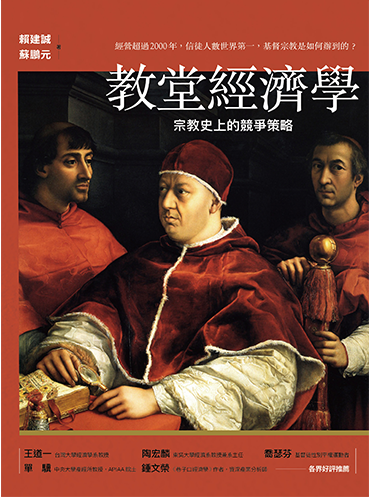How can we best understand and explain the changing environment of world religions over the centuries? While you might not think the answer is “with economics,” this book will show you why you should. Lai Cheng-Chung and Su Peng-Yuan use market economics to deconstruct the changing state of religion in our world.
Religious organizations have long described themselves as a spiritual alternative to the market-dominated world, but when Lai Cheng-Chung and Su Peng-Yuan apply the laws of economics to organized faith, they get some remarkable results. The authors ask some basic but important questions: What makes some religions more popular than others? Why did Christianity become more popular than its older brother, Judaism? And why did some of the great European cathedrals take decades – and sometimes centuries – to build?
Taking Christianity as case study, the authors examine how it made itself competitive in its earliest years of development and examine how the strictness of its principles affected its attractiveness to the “market” of believers. They also analyze the ways in which Christianity cemented its influence in society and politics by tailoring its product and strategy, and how both are now losing their grip on modern consumers of religion.
While the book does employ rational methods of economic analysis, it is not intended to refute the value of religion. To the contrary, the authors point out that religion’s persistent and far-reaching effect on human society – which has periodically advanced human civilization – is the very thing that makes it worthy of study.
